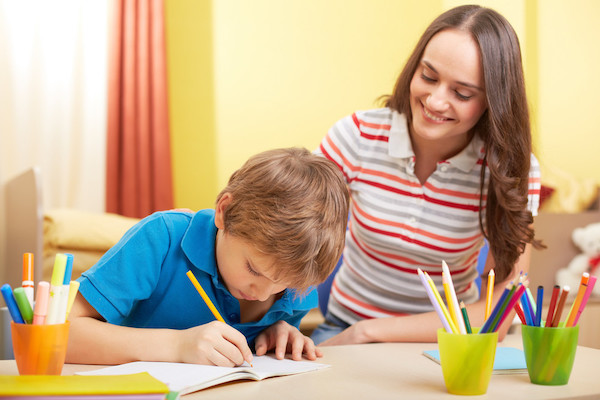
A large percentage of kids are learning from home. The pandemic has caused a mix of remote and in-person learning, and many parents keep their children at home full-time. If your children have been learning from home, you may have noticed that their school habits aren't present anymore. The routines schools provide can be difficult to replicate at home. However, to help your child maintain a steady routine and enhance their education, you may consider building an at-home classroom for your child or children. Here are some tips to get you started.
Find a Comfortable But Realistic Spot
First, you're going to need to find a spot in your home to designate as a classroom for your child or children. They may be working from the kitchen table or their bedrooms, but both of these spots can be counterproductive. The kitchen should be a place in the home that can be seen as a breakroom. Like a cafeteria in a school, your kids should use the kitchen as a space to take breaks, eat breakfast and lunch, and enjoy a mid-day snack.
Utilizing bedrooms as classrooms can also be a bad idea. Bedrooms are filled with toys and other distractions. Plus, doing schoolwork from one's bed isn't exactly the best idea either. Instead, consider transforming a room or space in your home into a classroom. Did you know that finishing your basement would cost you 80% less than buying a bigger home? You may take this opportunity to completely renovate a guest bedroom, extra living room, a den or basement, or other empty but useful space in your home and turn it into a classroom.
Stay Organized
Secondly, staying organized is key. The more time your children spend at home, the messier their educational materials may grow. Invest in some organizational materials, such as plastic cubbies and rolling storage. Set up a table with comfortable seating so your children can work in a cozy but formal space. Make sure computers and other electronics are kept in safe spaces to avoid spills and other messes that could cause damage.
Organize their schoolwork by subject, keeping materials in folders on a shelf for easy access. Keep writing utensils, index cards, sight words, and other helpful materials on a handy rolling cart for easy access. They can keep the cart next to them throughout the day, and when they're done with school each day, they can roll it to the corner of the room for easy and organized storage.
Hang Motivational Artwork
Your kids may need some motivation as they do their schoolwork from home. It can be very difficult to work solely from a computer all day, especially when it comes to learning and practicing new material. Keep your kids motivated with some fun artwork to spice up their school space. Classrooms in schools typically have some educational and motivational posters and artwork hung on the walls -- and you can decorate just the same. Be sure to use Command strips or thin nails when you hang up posters or framed quotes and pictures. In the average American's lifetime, one will move 11.7 times. You don't want the next owners of your home's walls to be riddled with holes and paint marks.
Make Learning Hands-On
About 6.1 million children aged two to 17 in the U.S. are diagnosed with ADHD, according to the Centers for Disease Control and Prevention. Whether your child has a diagnosed learning disability or not, children can have a hard time paying attention and tend to learn better through hands-on activities. It can especially help them understand complex concepts in math. You can help your child succeed by providing opportunities for hands-on learning in your at-home classroom.
Purchase helpful materials, such as craft supplies, to aid in hands-on activities during school hours. Writing a book report can sound boring, but writing one alongside a decorated, life-size book cover is another great way for your child to feel entertained and invested by their subject material. They can share their creations with their classmates and teachers via online chats and video sessions, and your child will be excited to do so. Remember that hands-on activities will get your child moving, which aids in reaching the physical activity they should have each day. For "gym class," be sure to engage with your children so that they're getting the exercise they need to perform better in school and to be tired so they can get plenty of rest, as school-aged children ages six to eleven are recommended to get 10-11 hours of sleep each night.
Your child's educational journey is important, especially during the pandemic and the uncertainty it has caused throughout the world. To keep your child motivated and active in their learning, set up an at-home classroom that is functional and practical. It should also allow for movement and efficiency so that your child's needs are being met both educationally and mentally.


























